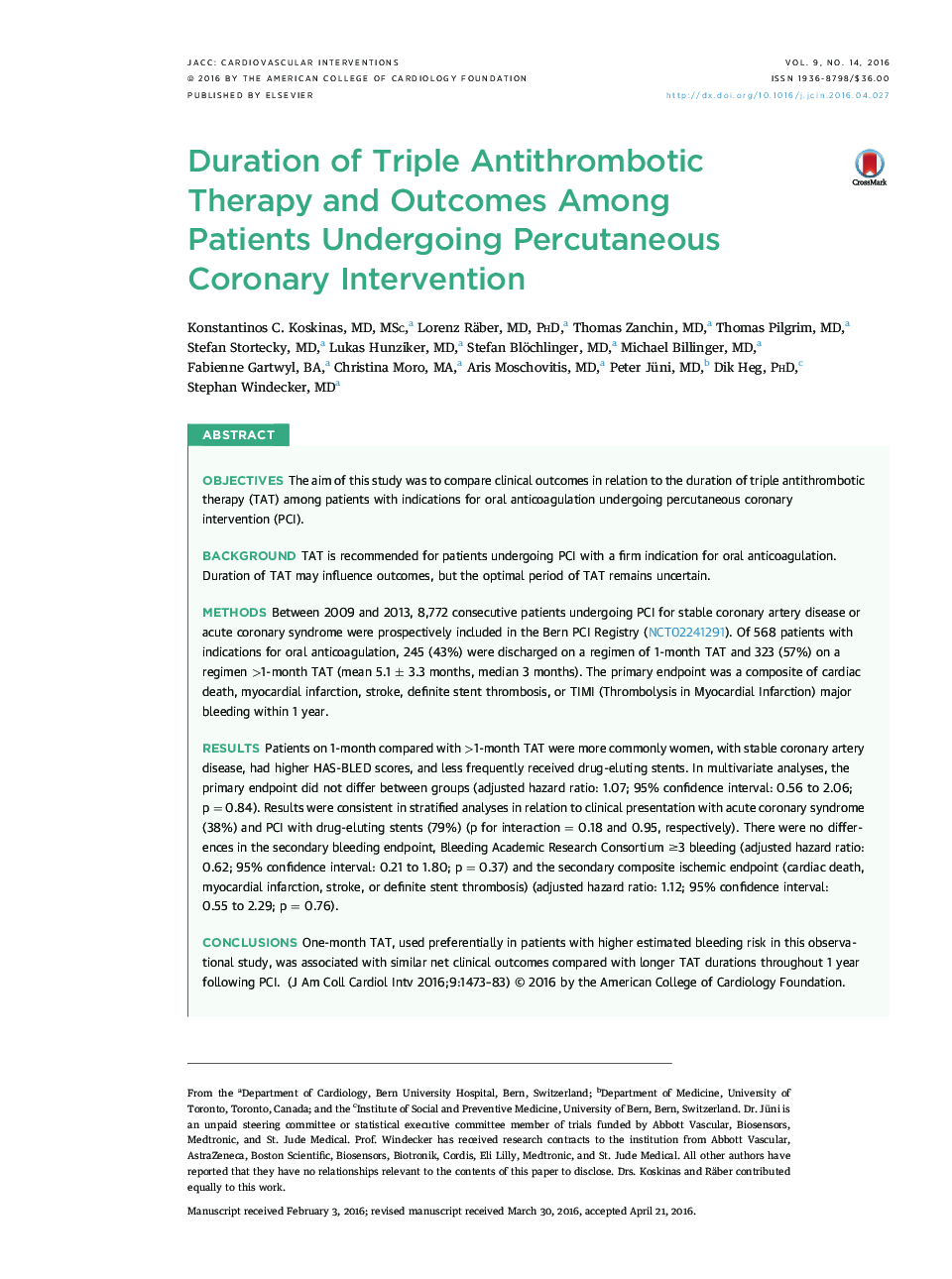| کد مقاله | کد نشریه | سال انتشار | مقاله انگلیسی | نسخه تمام متن |
|---|---|---|---|---|
| 2939461 | 1176989 | 2016 | 11 صفحه PDF | دانلود رایگان |
ObjectivesThe aim of this study was to compare clinical outcomes in relation to the duration of triple antithrombotic therapy (TAT) among patients with indications for oral anticoagulation undergoing percutaneous coronary intervention (PCI).BackgroundTAT is recommended for patients undergoing PCI with a firm indication for oral anticoagulation. Duration of TAT may influence outcomes, but the optimal period of TAT remains uncertain.MethodsBetween 2009 and 2013, 8,772 consecutive patients undergoing PCI for stable coronary artery disease or acute coronary syndrome were prospectively included in the Bern PCI Registry (NCT02241291). Of 568 patients with indications for oral anticoagulation, 245 (43%) were discharged on a regimen of 1-month TAT and 323 (57%) on a regimen >1-month TAT (mean 5.1 ± 3.3 months, median 3 months). The primary endpoint was a composite of cardiac death, myocardial infarction, stroke, definite stent thrombosis, or TIMI (Thrombolysis in Myocardial Infarction) major bleeding within 1 year.ResultsPatients on 1-month compared with >1-month TAT were more commonly women, with stable coronary artery disease, had higher HAS-BLED scores, and less frequently received drug-eluting stents. In multivariate analyses, the primary endpoint did not differ between groups (adjusted hazard ratio: 1.07; 95% confidence interval: 0.56 to 2.06; p = 0.84). Results were consistent in stratified analyses in relation to clinical presentation with acute coronary syndrome (38%) and PCI with drug-eluting stents (79%) (p for interaction = 0.18 and 0.95, respectively). There were no differences in the secondary bleeding endpoint, Bleeding Academic Research Consortium ≥3 bleeding (adjusted hazard ratio: 0.62; 95% confidence interval: 0.21 to 1.80; p = 0.37) and the secondary composite ischemic endpoint (cardiac death, myocardial infarction, stroke, or definite stent thrombosis) (adjusted hazard ratio: 1.12; 95% confidence interval: 0.55 to 2.29; p = 0.76).ConclusionsOne-month TAT, used preferentially in patients with higher estimated bleeding risk in this observational study, was associated with similar net clinical outcomes compared with longer TAT durations throughout 1 year following PCI.
Journal: JACC: Cardiovascular Interventions - Volume 9, Issue 14, 25 July 2016, Pages 1473–1483
